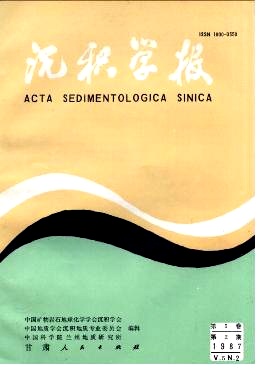SEDIMENTARY SEQUENCE AND PROCESSES OF POST-GLACIAL PERIOD IN THE NANLIUJIANG DELTA, GUANGXI
- Received Date: 1985-03-16
- Publish Date: 1987-06-10
Abstract: The Nanliujiang Delta is located in the south of Hepu County, Guangxi. It is a small tide-dominated delta,whose area is about 150 km2. Types and characteristics of sedimentary sequences are summarized by analysing the data of drilling. Based on the comparison between the sequences of the post-glacial period and the modern Nanliujiang Delta, the sedimentary evolution of the delta in the post-glacial period has been interpreted. Three sedimentary stages are divided due to the relative variations between the sedimentary rate and the rate of sea-level rising. The first is a transgressive stage, i. e. the early post-glacial period ( before 7,000 B. P. ) when the sea-lev el rising rate is "greater than sedimentary rate and the risen sea-level leads to the rising of sedimentary base-level, which induces the retrogressive aggradation in the channel, forming the low sandy gravel layer; the second is a stable one, i. e. the middle post-glacial period ( around 7,000 B. P. ) when the sea-level rising rate is lowered and is approximate to the sedimentary rate and the strand sand bars in the marginal area of the modern delta are the products of the wave working upon the shore of the estuary in that period; the third is a regressive one, i.e. the late post-glacial period (after 7,000 B.P. ) when the relatively stable sea-level causes the sedimentary rate to exceed the sea-level rising rate and the delta is progradiag toward sea with the sedimeots brought by the river depositing in the moutharea. And also with the progradation of the delta, the deltaic sequence is produced and then is partly, somewhere with its underlying sandy gravel layer, cut by river. The result is the reworked post-glacial sequence. Relating sedimentary processes with their sediments, the authors have put forward a model for post-glacial sedimentation in the area. The post-glacial sequence is composed of the lower sandy gravel layer originated by retrogressive aggradation in the channel in transgression and the upper deltaic layer formed in regression. The sandy gravel layer is characterized by coarse sediments, poor sorting, poor roundness and the occurrence of some Foraminifera of euryhalinous species in its upper part, indicating an up-ward increase in mariness. The deltaic layer includes the lower neritic-prodelta mud, the middle delta-front sand and the upper delta-plain clay. The up-ward decrease in mariness of this layer is indicated by the fine-coarse-fine change in sediments and the decrease in marine fossils. This is the main sequence in the Nanliujiang Delta, accounting for two thirds of the delta area. Some of this type have been cut and reworked by river after its formation. As a result, parts of the upper layer or even to the bottom, are occupied by fluvial deposits. It can be deduced that with the progradation the Nanliujiang Delta will appear outside the Lianzhou Bay and expose itself to wave, so that in its front a wave-induced sand bar may be developed. The transformation from tide-dominated type to wave-dominated one may occur, similar to the case of the Hanjiang Delta, Guang-dong. Therefore, the third possible reason for the delta type transformation may be the progradation of delta itself.
| Citation: | Sun Heping, Li Congxian, Ye Zhizheng. SEDIMENTARY SEQUENCE AND PROCESSES OF POST-GLACIAL PERIOD IN THE NANLIUJIANG DELTA, GUANGXI[J]. Acta Sedimentologica Sinica, 1987, 5(2): 133-143. |






 DownLoad:
DownLoad: